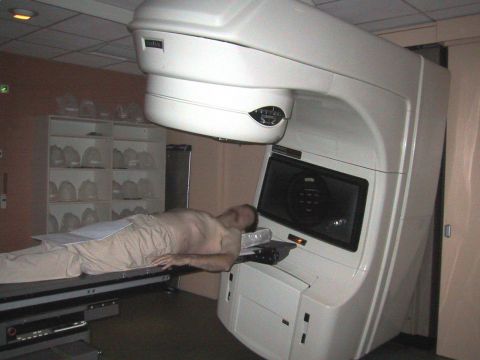The use of charged particles as an alternative to X-rays or gamma rays can expand the scope of radiotherapy for tumors that previously required invasive surgery, while speeding up diagnosis and reducing peripheral damage to neighboring tissues.

Improvement in the health of many cancer patients is on the horizon following one of the most significant advances in radiotherapy since the first use of X-rays to treat tumors in 1904. The use of charged particles as an alternative to X-rays or gamma rays can expand the scope of radiotherapy for tumors that previously required invasive surgery, while speeding up diagnosis and reducing The peripheral damage to neighboring tissues.
This growing field of curing cancer using charged particles was discussed in detail at a recent workshop organized by the European Science Foundation (ESF), where new devices were presented that could lead to improvements, both in the diagnosis of the disease and in its treatment. Diagnosis and treatment are very closely related to each other in radiotherapy, as a more precise location of the cancer cells allows for a more precise and focused dose of radiation.
"Developments in imaging have allowed improvements in the direction of the radiation beam and these two fields are related to each other," said Barbara Camanzi, workshop coordinator and expert in radiotherapy equipment at the University of Oxford in the UK. These improve the chances of eliminating the tumor while reducing the peripheral damage to nearby healthy tissues. This peripheral damage not only causes tissue death, but may also lead to the development of secondary tumors, which is an age-old and stubborn problem in traditional radiotherapy using X-rays. Some tissue cells close to the tumor absorb enough radiation to develop DNA mutations. theirs and these may cause them to become malignant cells, but this radiation is not sufficient for their final elimination.
"The drop in the peripheral radiation level to the body ranges from a factor of 2 to a factor of 15 and depends on the particular treatment and the exact site in the body," noted Bleddyn Jones, an oncologist from the University of Oxford who participated in the workshop. "All methods that use x-rays or gamma rays from an external source deliver a large dose to adjacent healthy tissues with long-term risks of functional changes and malignant development."
The improvement in imaging was made possible through charged particles that facilitate the detection of tumors when they are still small and thus improve the chances of recovery for patients, regardless of whether they undergo radiotherapy or not. "Making an early diagnosis of small tumors improves the chance of recovery both following radiotherapy and following surgery," said the researcher.
However, in the workshop, they recognized the need for further significant improvements in the equipment itself, both for the treatment and for the diagnosis, in order to fully exploit the potential of charged particles in curing cancer. Further research is also needed to adjust the doses in order to minimize the risk of the formation of secondary tumors as a result of the irradiation, which remains a risk factor of charged particles. The workshop also referred to the need to improve the physical structure of the screening device.
The other topic discussed in the workshop was the training of the radiotherapy experts in the latest methods so that they can reliably choose the best form of treatment for each and every case. Sometimes irradiation with charged particles will be the best method, in other cases it will be the usual irradiation with X-rays, while in other cases - surgery or chemotherapy, or a combination of several of these methods will be the best course of action.
"There is a need to conduct additional training and practice sessions regarding healing with charged particles, especially in those European countries that currently do not have any plans to build devices of this type, said the researcher, who noted that another conference in the field is planned to be held in 2010 at the University of Oxford.
For information on the website of the European Science Foundation
